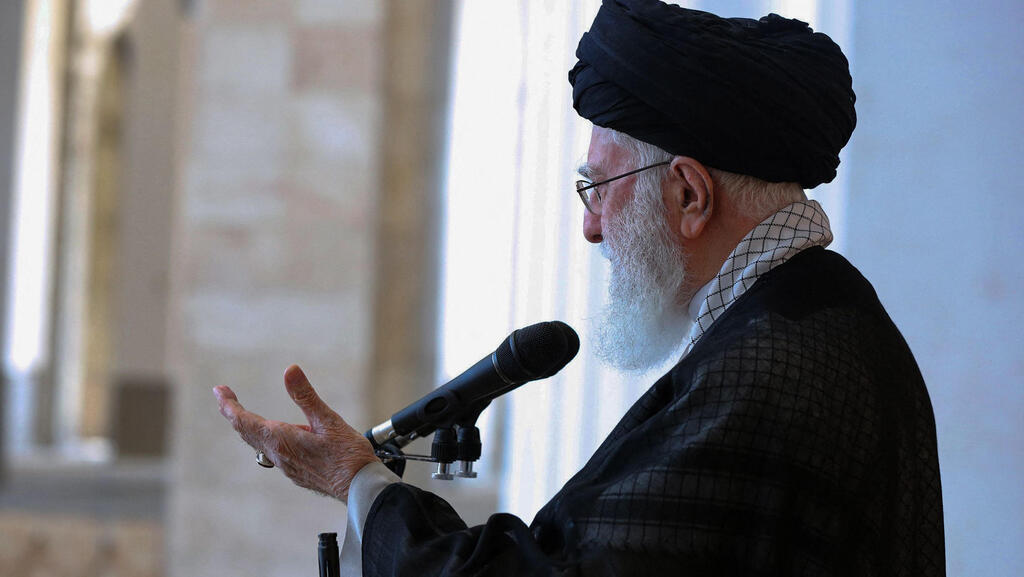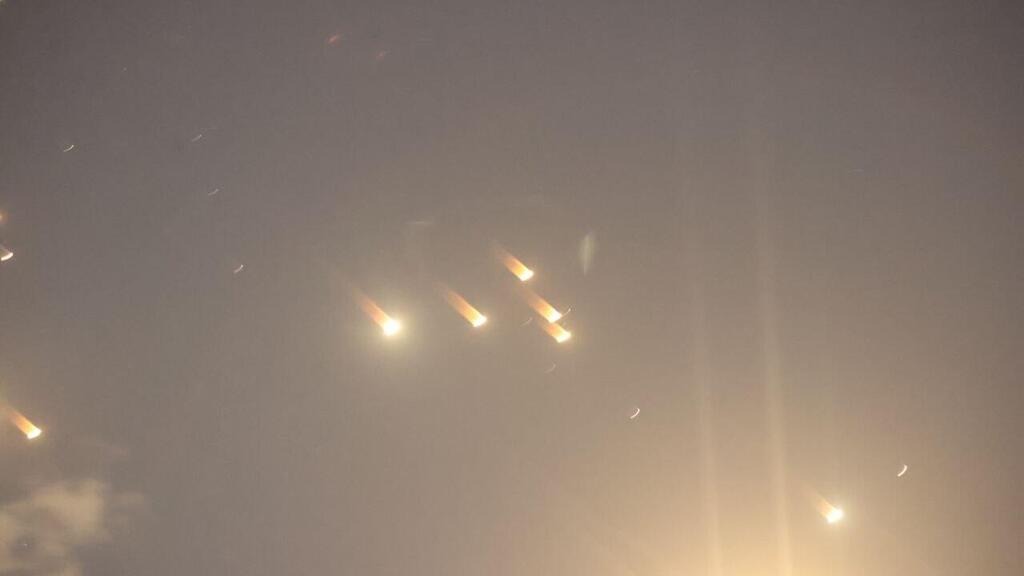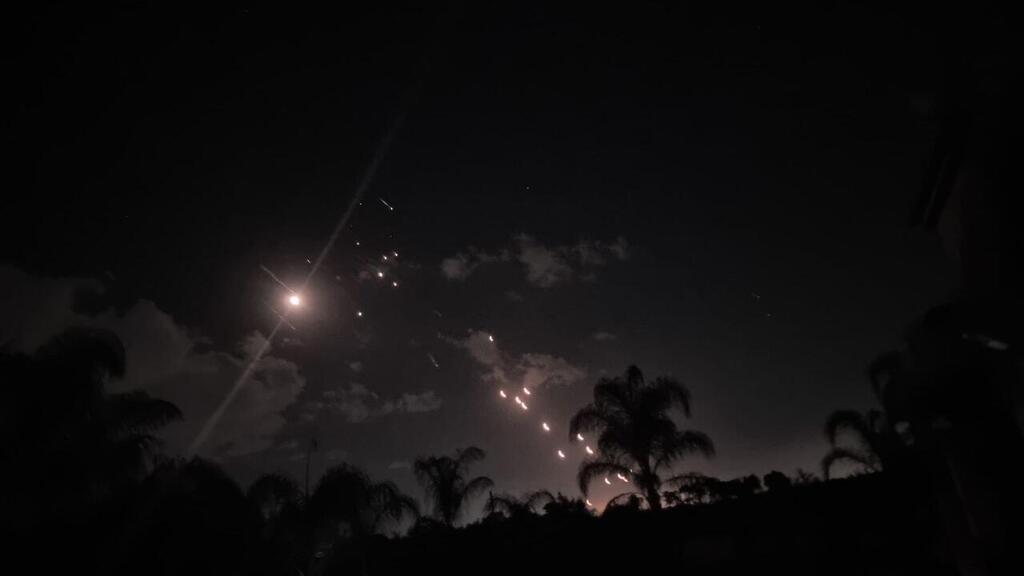Getting your Trinity Audio player ready...
Iran has been commonly viewed as a risk-averse actor who weighs options carefully and deliberately. Accordingly, it is inherently a sane, cautious player, as evidenced by its single-minded use of proxies to carry out its decades-old aggressive regional designs.
While calling the missile strike a “shining” job by Iran’s armed forces. Khameini went on to say: “We will not act irrationally … not act impulsively.”
Likewise Iran’s foreign minister, Abbas Araghchi, on a rushed visit to Beirut stated: “We did not initiate the [October 1 missile] attack, it was a response to an attack on Iranian lands. We have no plans to continue, unless Israel decides to attack us. If it does, our response will be calculated and proportionate."
Yet, certain elements of the October 1 missile attack on Israel raise significant questions as to the right-mindedness of Iran‘s leaders. Indeed, growing evidence points to a leadership that is increasingly irrational.
Iran launches ballistic missiles at Israel
The disturbing evidence of an Iran that has gone bonkers may be the result of a leadership that is in utter panic now that Israel is dismantling Iran’s proxy strategy. Tehran’s growing strategic ties to Russia, soon to be formalized via a 25-year comprehensive cooperation pact, may also contribute to the regime’s new penchant for death-defying risk-taking. Finally, it could be that the fanatical religious-ideological doctrine under which the Islamic Republic operates has now supplanted any vestiges of rational thinking in Tehran.
Iran might be on a kamikaze mission or, as Khameini vowed in his sermon: “Martyrdoms and the blood that was shed shouldn’t shake your determination but make you more persistent…The resistance in the region will not back down…and will win.“
Thus Iran has sought by word and deed to demonstrate that it is undeterred by Israel’s escalation dominance and displays of its technological, intelligence, and military superiority in battling all the fronts the mullahs have activated against it. The Wall Street Journal on October 1 said Israel sent messages to Iran before the missile strike which vowed to respond to any attack against its territory, irrespective of the damage inflicted and without regard to the actual casualties it had suffered. Israel, the paper said, threatened to strike nuclear or oil facilities if Iran attacked.
Air and intelligence bases
Unlike Iran's previous missile strike, there was little time for Israelis to prepare as the attack consisted exclusively of a large number of faster ballistic missiles whose travel time to Israel was about 12 minutes and whose warheads had some maneuverability. Combined, the aim was clearly to ensure the missiles hit their mark by making it more difficult for Israel’s missile defenses to intercept them.
Iran appears to have used its newer Fattah-1 and Kheybarshekan solid-fueled missiles, both with a reported range of 1,400 kilometers (870 miles), in the latest attack. The Iranians have claimed these more advanced ballistic missiles have a "circular error probable" (CEP) of about 20 meters, meaning half of all the missiles fired at a target will land within 20 meters of it.
However, the credibility of this claim should be treated on a par with Iran’s boasting it possesses hypersonic missiles. Ballistic missiles with conventional warheads have a high margin of error, especially when fired from far away. It would be surprising if Iran’s margin of error was better than a few hundred meters, perhaps as much as 500 meters, based on the October 1 evidence.
Reported high accuracy of Iran’s new missiles was, at least in part, a ruse
Open-source information and imagery analysis have provided the following information:
• Some portion of the Iranian strike package focused on Nevatim and Hatzerim Airbases in southern Israel, but a large number of missiles targeted a very small geographic area in densely populated central Israel.
• Even with regard to the Nevatim airbase, which received up to 40 hits, most of the impact zones either missed entirely or simply hit the taxiways .
• The attack on the Glilot Intelligence Base, which reportedly houses IDF Unit 8200 (the IDF’s signals collection unit) and the Mossad Headquarters, was the most telling regarding the mullahs’ agenda. Only two impacts were identified, and the one impact that landed even remotely near the headquarters building did so about 520 meters away from the building itself. Instead the city of Hod Hasharon, a suburb of Tel Aviv, close to the Glilot base announced that around 100 homes were damaged in the Iranian bombings.
• In the town of Gedera, near the Tel Nof airbase, the Chabad elementary school suffered a direct hit and was badly damaged. “Just to think that a few hours ago there were hundreds of students there, learning about Rosh Hashanah. A huge miracle happened to us,” the director of the school’s network, Rabbi Eliyahu Krichevsky, told Israel’s Channel 7.
• The Ayalon Mall, in Raman Gan, immediately west of Yarkon Park, where Israel’s Internal Security Service (the Shin Bet) is reportedly headquartered, was hit instead.
• According to Palestinian media, Sameh al-Asali, a laborer originally from Jabalia in the Gaza Strip, was struck and killed in the West Bank village of Nu’eima, near Jericho in the West Bank. Four other Palestinians were reportedly injured by shrapnel from the same missile.
• Beside the missile that killed al-Asali, impacts were reported in other parts of the West Bank. Palestinians in Ramallah were filmed touching and posing with a piece of a ballistic missile that fell in the city. Some Arab social media users also remarked that the Shiite Islamic Republic has so far only managed to kill and wound Sunni Muslims in its strikes against Israel.
Given these circumstances, it emerges that the story about the high accuracy of Iran’s new missiles was, at least in part, a ruse. It was concocted also to justify firing these weapons against military targets in or in close proximity to densely populated areas in Israel with the full knowledge that odds are they will hit civilians. This way, certain IDF facilities are providing de-facto “covers” for Iran deliberately targeting Israeli civilian centers under the guise of “legitimate” military installations.
IDF’s Chief of Staff Lt. Gen. Herzi Halevi, on a visit to the IAF base in Tel Nof the day after the attack, had no illusions. He said, “Iran attacked civilian areas and endangered the lives of many civilians.” No wonder Iran’s President Masoud Pezeshkian went out of his way to declare on October 6 that “only [Israeli] military targets were hit” by the Iranian missile barrage.
In the aftermath of the attack Iran’s true agenda has been laid bare— while claiming their new missiles have improved accuracy they must have known better. Tehran has willingly taken over what up to now was exclusively the role of its proxies, especially Hezbollah— namely attacks on the Israeli civilian population. The mullahs either meant to inflict mass Israeli civilian casualties or were risking such an outcome irrespective. This despite them knowing full well that a large civilian toll would mean all bets were off insofar as an Israeli response was concerned, and could even bring a reluctant U.S. to participate in exacting a severe punishment.
In fact, even if all the Iranian missiles hit exclusively military targets, Tehran could not assume the attack would neutralize Israel’s ability to retaliate harshly. The mullahs, it must be concluded, were oblivious to provoking potentially regime-shattering blows. This extraordinary recklessness was geared toward, at most, a propaganda boost and a limited and transitory impact on the IDF’s capacity to hit back and inflict catastrophic damage on Iran.
Evidently, such cost-benefit rational considerations, which would normally militate against launching an attack, or at least modify its configuration, were absent from the Iranian decision-making process. After all, as Khamenei said in his sermon, every strike on Israel is "a service to the region and to all humanity."
The Dimona reactor
An even scarier Iranian decision was the apparent targeting of the Dimona reactor during the latest attack which was reported by veteran defense correspondent Ron Ben Yishai in Ynetnews on October 2.
Iran’s fixation with Dimona is long-standing. At the minimum threats against the reactor were an emblematic part of Iran’s psychological war designed to terrorize and intimidate Israel. It was also aimed to deter Israel from preempting Iran’s nuclear program.
For instance, in December 2021 Iran published and distributed a video of rockets and drones being used to attack Dimona. It said the attack took place during the recent 17th Great Prophet drill with the Islamic Revolutionary Guard Corps (IRGC) and the IRGC Air Force.
According to Iran’s semi-official Fars News Agency, the forces “simulated a missile and drone attack on the Dimona nuclear center using 16 ballistic missiles and five suicide drones, successfully.” The exercise was concluded with the IRGC forces blowing up a target set up to resemble the Dimona nuclear reactor.
On April 18, 2024 the Iranian state-run Press-TV channel reported that Tehran may “target the nuclear research center in Dimona in case of Israel’s attack.” Accordingly, during the April attack Iranian missiles and drones managed to get through the Israeli multi-level air defense system and hit military targets in the Negev desert, “just a stone’s throw from the Dimona Nuclear Research Center.”
Ahmad Haghtalab, the IRGC commander in charge of nuclear security, was cited as saying on April 18 that Tehran has identified the location of Israel's "nuclear centers" and will be ready to “destroy them” in case the Jewish state responds to the an Iranian attack on Israeli “military facilities.”
Given the reported measures built into the Dimona reactor with the goal minimizing its vulnerability to aerial attack as well as the air defenses protecting it, it does not appear to have been in real danger during either of the Iranian attacks.
Yet, even if the reactor building itself is well defended and built to resist aerial hits, or the reactor was in a shutdown mode as a precaution, radioactive material is usually also stored in spent fuel ponds, where used rods are kept underwater to cool and to allow radiation levels to fall before being moved to final storage.
If coolant is lost from the ponds, either by a direct hit that breaches containment structures or by a meltdown of the core due to losses of power, the stored fuel will heat up. If the temperature rises above around 900 degrees Celsius (1652 Fahrenheit), the cladding around the zirconium cladding will ignite, leading to the spreading of radioactive material.
(The meltdowns at three reactors at the Fukushima nuclear power plant in Japan in 2011 were caused by a tsunami flooding the site and disabling the backup emergency generators as well as the external power supply. Consequently, it was impossible to cool the reactors and the ponds resulting in the eventual melting of the core between four and 77 hours after the initial tsunami, depending on the unit. More than 100,000 people were initially evacuated from their homes because of the subsequent release of radiation.)
Any release of radioactive isotopes could be catastrophic for the surrounding areas.
Iran must be assessing that an Israeli strike on its nuclear sites may be close
Radioactive debris would likely spread to countries surrounding Israel and depending on wind patterns, that could well include Iran itself, the rest of the Middle East and North Africa, and possibly even Europe. There would also likely be contamination of the water in some local rivers which would have severe impacts on drinking water and local agriculture.
Given these dreadful outcomes, what could have been the mullahs' motives to undertake a potentially cataclysmic attack?
First, Iran must be assessing that an Israeli attack on its nuclear sites is closer than ever now that it is on the cusp of crossing the nuclear threshold and Hezbollah, its shield against such an Israeli undertaking, is on its knees. The targeting of Dimona is meant to bolster Iran’s deterrent against a preemptive Israeli attack.
Second, there is the propaganda motive—Iran might be demonstrating its new prowess domestically as well as to its allies. While Hezbollah might be in distress, Iran's power is intact if not expanding. Israel might constantly threaten to attack our nuclear facilities yet we can do the same and in fact have done so already. The bottom line—Iran’s nuclear program is secure.
Third, it must be considered that the fanatics in Tehran are on a suicide mission and earnestly believe it is their sacred duty to cleanse the region of the infidelity cancer called Israel even at the cost of mass “martyrdom.” In the words of Khameini on August 14, 2024 “As the Qur’an states, a non-tactical retreat in any domain—whether military, political, or economic—will incur divine wrath.”
Implications
1. Iran’s repeated charges that Israel is led by crazy leaders was meant to legitimize and lay the grounds for its maniacal October 1 attack. IRNA on October 2, cited Chief of Staff of the Armed Forces of the Islamic Republic of Iran Maj. Gen. Mohammad Bagheri as describing a “Zionist regime that has gone crazy.” Tehran Times on September 23, cited Iran’s Foreign Ministry spokesperson, Nasser Kanaani, as describing Israel's military actions in southern Lebanon, as "insane."
2. Contrary to Iran’s public statements that it was developing missiles and other aerial platforms as a deterrent, Tehran views these capabilities as first strike weapons. In this the mullahs join other Middle Eastern dictators like Iraq’s Saddam Hussein and Syria’s Bashar al-Assad who used both missiles and chemical weapons against their enemies.( In the case of Iraq’s use of Scud-B missiles against Israel in 1991– the attacks were entirely without provocation. Additionally, Saddam was found to have made preparations to employ biological weapons.)
3. Given this reality, and the improved performance of its missiles, preempting Iran’s aerial threats (including Iran’s ballistic missile production lines) should be an Israeli top priority in general and a sine qua non when signs are picked of an imminent attack. (This would be a stark departure from partaking in the passive “ take the win” doctrine advocated by President Biden in the wake of the successful defense against Iran‘s missile and drone attack on Israel in April).
4. It is possible of course to assess the latest Iranian missile attack on the basis of its results and draw solace from the fact that is was largely defeated and its impact negligible. Yet, if the strike is viewed as to its intent, and as a sign of Iran’s growing risk-taking propensity, the conclusions must be quite ominous if not downright terrifying. Such an interpretation should lead Israel to adopt a much different set of responses. Under these circumstances, President Biden’s urgings that Israel undertake a “proportional response” to Iran’s latest outrage, indicate a dogged adherence to the traditional conception of Iran which is simply quite dangerous.
5. While Iran insisted the attack was a counterforce strike—aimed exclusively at military and strategic assets—the mullahs deliberately attempted to also hit Israeli cities and towns. One can only imagine what could transpire if Tehran puts its hands on nuclear weapons given its fanatical zeal and its proven preference for first-strike use. Simply put, a nuclear Iran would be a global nightmare and its prevention the absolute top priority of the free world, not just Israel.
Dr. Avigdor Haselkorn is a strategic analyst. He has been published widely on national security issues.
Get the Ynetnews app on your smartphone:







